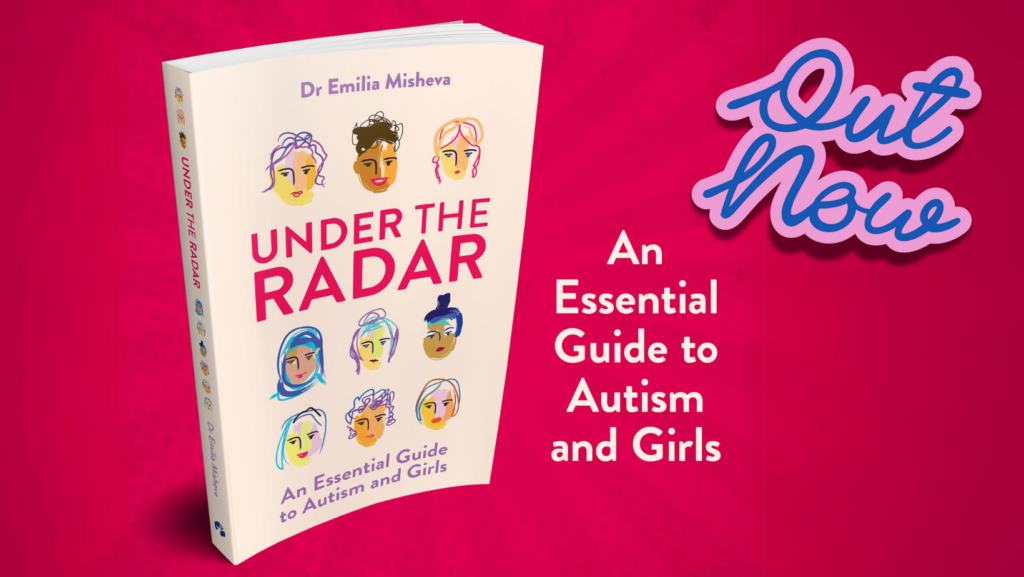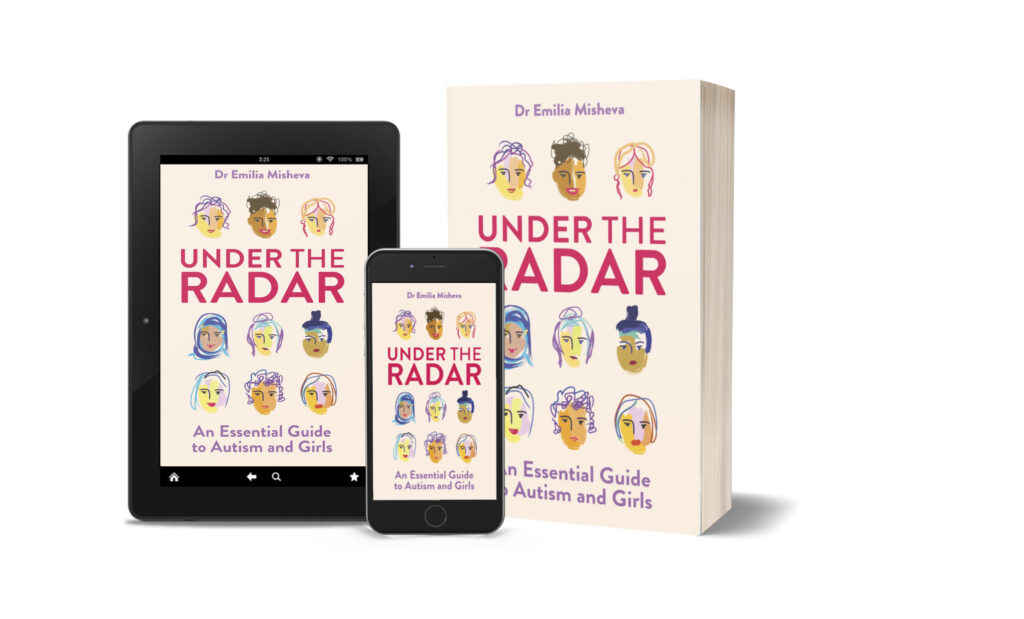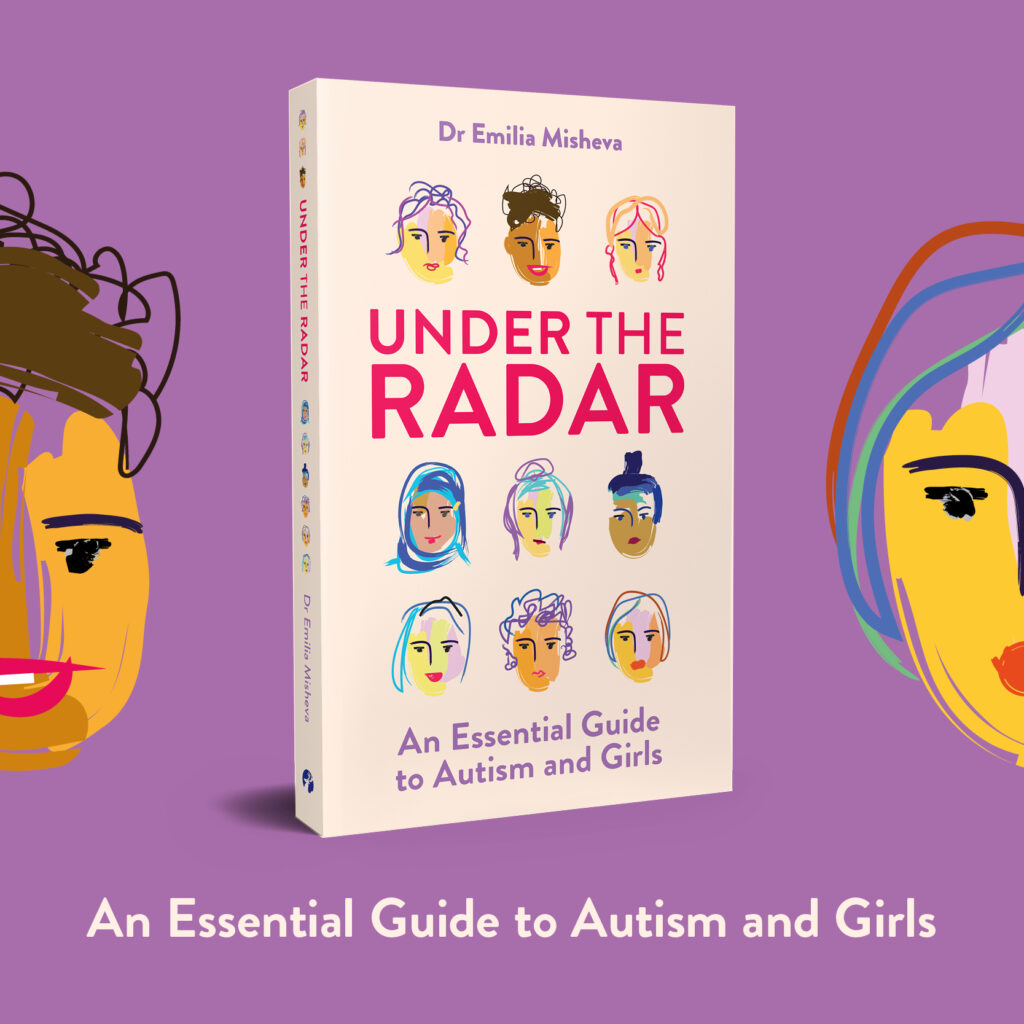Under the Radar by Dr Emilia Misheva introduces you to the differing presentations of autism that are common in girls, but also explores why referring to ‘male’ and ‘female’ autism is too reductive. In this blog piece, taken from the preface to the book, Dr Misheva explains what the reader can expect from the book, and why she wrote it.

When two people who experience the world very differently meet, they are both likely to have some difficulties with understanding and empathizing with each other’s perspectives, at least to begin with – this relatively simple idea is also known as the ‘double-empathy’ problem (Milton, 2012, 2018) and it raises particularly important questions when we consider how autistic and non-autistic people communicate with each other. Research has indicated that non-autistic people struggle to identify the emotions of autistic people and judge them negatively when meeting them for the first time (Sheppard et al., 2016, cited in Milton, 2018), yet this is rarely spoken about or portrayed as a ‘deficit’ on non-autistic people’s part.
And yet, autistic people’s differences in this very area are often presented as a key, defining ‘deficit’ that needs to be addressed through intervention, so that they can successfully ‘integrate’ in society. Questions about what neurotypical people may need to do to adapt to a diverse society where not everyone shares their neurotype are rarely, if ever, raised. More often than not, the onus is on autistic people and their families to advocate for themselves, to adapt to structures developed by and for neurotypical people and to fit the very restrictive mould of what is considered ‘typical’ or ‘normal’ by neurotypical standards.
In that context, understanding the needs of a group of autistic people that has often been rendered invisible and whose needs are still routinely missed or misunderstood is critically important. Autistic girls and women have historically been marginalized on several levels – their needs were, up until recently, almost absent from the academic literature, as autism was wrongly perceived as a ‘male’ condition, and while there is growing recognition of autism in girls and women now, there is still a very long way to go.

The purpose of Under the Radar is twofold – I hope that it will be helpful for autistic people, people who think they might be autistic, their family members, friends and professionals.
However, it is also intended for those who know very little about autism and who may think that they don’t know any autistic people – the onus to educate ourselves is on us all. The simplistic ‘them’ and ‘us’ narrative is unlikely to change while the literature on autism is perceived as being for a ‘specialist’ audience. Trying to understand the different ways people are or can be is meant to be a two-way street and a collective responsibility.
Chapter 1 will consider the ways in which the needs and profiles of autistic boys and girls sometimes differ, with a focus on the role of different gender-specific societal norms, expectations and stereotypes. We will consider whether it is appropriate and, indeed, accurate, to refer to ‘male’ and ‘female’ autism and will explore the characteristics of the ‘internalised presentation of autism’ as a more useful way of making sense of some autistic girls’ needs.
We will also explore why, for a long time, the experiences of autistic girls and women were excluded from the dominant narrative and their needs were, and to a great extent still are, poorly understood. Finally, we will focus on the diagnostic discrepancies between autistic boys and girls and will address questions such as, why are girls less likely to be diagnosed with autism, and why do they score lower on the ‘gold standard’ diagnostic assessments.
Chapter 2 will consider autistic girls’ needs in education, including how those may change and evolve from primary to secondary school. We will explore how a lack of language and learning disabilities or difficulties could further mask autistic girls’ needs in school and result in incorrect assumptions about the source of their differences.
Chapter 3 will focus on friendships and relationships, and how the internalized presentation of autism in girls may influence the way autistic girls approach social interaction. We will discuss one of the most common misconceptions surrounding autism – the myth that autistic people are unempathetic.
Chapter 4 considers the various changes that take place during puberty and the unique challenges this tumultuous period can pose for autistic girls and young women.
Chapter 5 explores autistic girls’ mental health needs and considers how delayed diagnosis or lack of recognition could lead to misdiagnosis or ‘diagnostic overshadowing’.

Finally, a word of caution: it is important to remember that no two autistic people are the same and, much in the same way as we shouldn’t assume what a person’s individual needs may be based on their diagnosis alone, we shouldn’t make assumptions purely based on their gender either. Therefore, while Under the Radar focuses on presentations that we may come across more often in girls, the ideas and conclusions drawn are likely to be relevant and applicable to all children who fit the same profile, regardless of gender.
Under the Radar is out now and available at JKP.com or wherever you buy books.